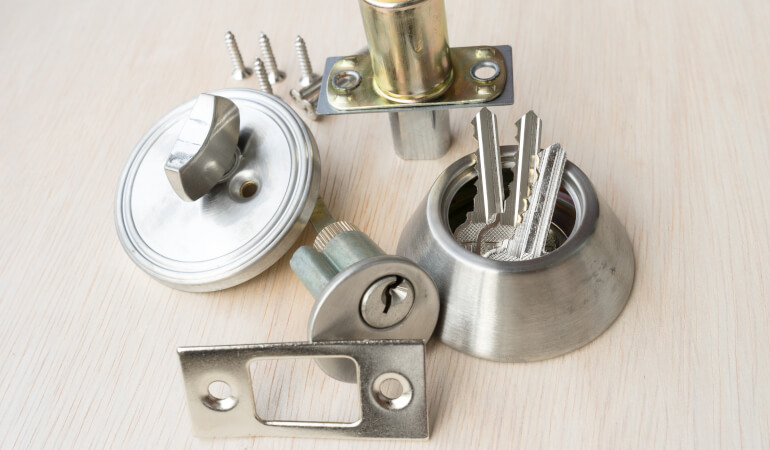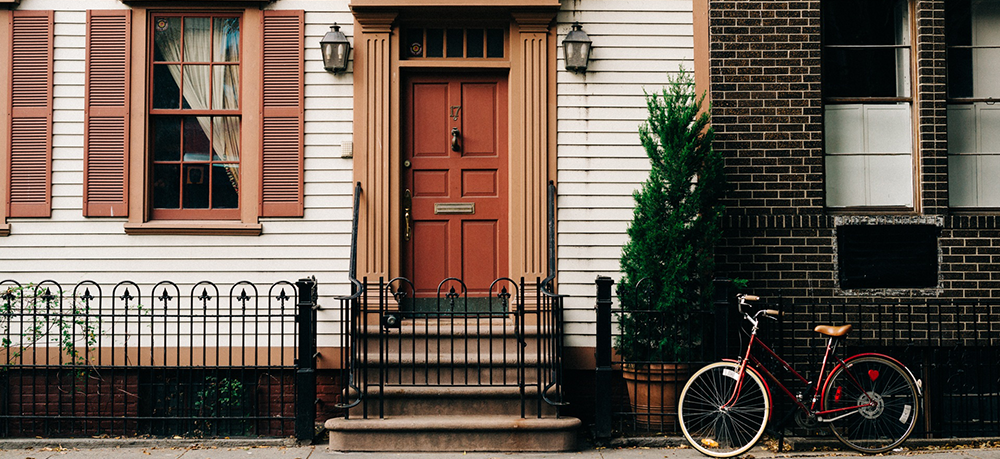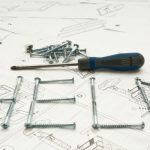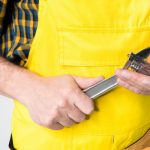
This comprehensive guide contains all the information you may need to enhance your home’s security or just find out how locks function in general. Our locksmith experts provided the insights to assist you in understanding how your home’s locks operate and what potential problems you may encounter.
Let’s begin by explaining…
Table of Contents
What are the main parts of a door lock called?
First, we need to clarify that there are primarily two kinds of locks: mechanical and electronic. You use a key for the first kind and a combination of a key and code for the second.
Electronic locks use keypads or card readers for access. They are convenient but may lack the advanced features of smart locks. Smart locks, on the other hand, can be controlled remotely through a smartphone app, and they offer many features like activity logs and integration with smart home systems.
Important: Since electronic and smart locks are more complicated technologies, attempting to fix them yourself is not advised. It is best to leave this to a qualified locksmith. Mechanical door locks, on the other hand, are easier to understand and potentially fix. Therefore, we will focus on their parts and working mechanisms.
Every door lock has internal and external parts. Besides the different look of the knobs and levers, the internal parts of your lock have many similarities. The main door lock components you may encounter are:
- Cylinder – Cylinders contain the pins, springs, and tumblers that enable your key to unlock the door.
- Bolt or latch –The door bolt, also known as a latch, is another common part responsible for keeping your door locked. There are two types of latch (or bolt)—a spring bolt and a deadbolt.
- Spring bolt – As the name suggests, the bolt is held in place by a spring, and when the spring is released, the bolt snaps into the door and locks it.
- Deadbolt – When it comes to security, one option stands out: the deadbolt. Offering protection against lock-picking and tampering, this lock can be operated using either a key or a knob.
- The box – The small square-shaped hole that is holding the bolt is called a box. It holds the bolt in the doorframe when the lock is engaged.
- Spindle –The spindle connects the lever and the knob through the door so the lock can operate properly.
- The strike plate – The strike plate is the metal plate that is safely attached to the door frame. The main idea of the strike plate is to guide the bolt into the frame’s box and provide added security.
- Door handle – The door handle is not exactly a part of the locking mechanism, but it’s the essential part you need to operate the door lock, whether it’s by a latch or bolt.
Check also:
Home Security Tips: Effectively Protect Your Property from Burglars
Common door lock types and their parts
The common kinds of door locks in households today have similar components, still, let’s see in more detail what these elements are and what is their particular function.
Mortice door lock parts
Mortice lock is probably one of the most common types of locks used for internal and external doors. When properly installed, the only visible component of a mortice lock is the forend, which is visible when the door is open.
The two main types of mortice locks are sashlocks and deadlocks. Mortice lock cases have different functions, with the most commonly used ones for external domestic properties being insurance-rated 5-lever sashlocks and 5-lever deadlocks.
As for the components of a mortice lock, here they are:
- Lock case – The lock case is the essential part of a mortise lock, housing the mechanism to lock and unlock the door.
- Latch – This component extends from the lock body to latch into the door jamb, keeping the door closed. When the door is closed, the latch bolt is extended. Turning the key retracts the latch bolt, allowing the door to open.
- Deadbolt – The deadbolt extends from the lock body and is operated by the knob or key of the lock cylinder.
- Deadbolt knob – The deadbolt knob is the part used to control the deadbolt.
- Latch follower/Spindle – The follower is a square hole on the lockcase designed for inserting a standard spindle of a lever handle. It operates the latch when you turn the handle, and the size of the square hole is typically 8×8 mm.
- Springs – Typically, there are two springs in the mortice locks. The first one pushes the latch bolt out so it will stay locked. The second one pushes the lever down to keep the deadbolt locked.
- Perforation for cylinder – This part is usually designed to match the Euro profile cylinder.
- Forend – Also known as the faceplate, the forend is a part of the mortise lock through which the lock is fixed to the door leaf. It serves as a passage for the latch bolt and deadbolt.
- Strike plate – The strike plate is mounted on the door frame, enabling the latch and deadbolt to reach into the door frame, facilitating the door-closing function.
Deadbolt lock parts explained
Deadbolts are designed with similar inner parts, but they have two main subtypes:
- 5-lever mortice deadlock: It’s a secure option for your external door because it’s difficult to break into. If they meet the British Standard BS3621, you can rest assured they have been tested against all common break-in techniques.
- 3-lever deadlocks: It’s ideal for internal wooden doors to add privacy to your bedroom or bathroom.
The parts of a deadbolt lock are:
- The bolt – The metal rod that extends from the lock into the door is called a bolt. This lock part keeps the door closed safely.
- Latch -The mechanism that allows the deadbolt to extend and retract is called a latch. The latch keeps the door closed.
- Lock cylinder – The lock cylinder is a cylindrical casing that houses the keyway and key pins. When you use the correct key and turn it, the cylinder activates the deadbolt, allowing it to extend or retract.
- Keyway – The keyway is the hole where you insert the key.
- Key Pins – These pins are located inside the lock cylinder and correspond to the key pattern, allowing the lock to operate.
- Thumbturn (Optional) – Many deadbolt locks are designed with a thumbturn on the interior part of the door, so you don’t need a key to open the door.
- Strike Plate – The strike plate is the part where the bolt reaches the door frame when the door is closed. It is mounted on the door frame opposite the bolt.
- Faceplate – The faceplate is the metal element located on the edge of the door with holes for the deadbolt and the latch.
- Backplate (Optional) – Based on the type of deadbolt you have chosen, it may have a backplate on the interior side.
- Reinforcement plate (Optional) – If you see an additional metal plate that is covering the whole lock on the door, so this is the reinforcement plate.
Rim lock components
Rim locks are a common choice for wooden doors. They do not provide enough protection, but you can use them as secondary locks on external doors. The parts of a rim lock are:
- Lock body – Housing all the intricate components of the mechanism, the lock body can take on a rectangular or square form.
- Latch bolt – Extending from the lock body to the strike plate on the door frame, the latch bolt is set into motion by a key or knob.
- Keyhole or keyway – Serving as the point of entry for the key, the keyhole is a distinctive orifice on the lock body.
- Key cylinder – The key cylinder, where the key finds its home, is an essential element of the lock.
- Thumbturn (Optional) – Located on the inner side of the door lock, the thumbturn provides an alternative means to unlock the door without a key.
- Strike plate – Positioned opposite the latch bolt when the door is shut, the strike plate is a metallic fixture.
- Faceplate – Enveloping and safeguarding the internal components, the faceplate, often adorned with a keyhole, may have both aesthetic and functional design.
- Backplate (Optional) – Certain rim locks may include a backplate on the interior side, providing supplementary support and stability.
- Knob or handle (Optional) – Especially prevalent on interior doors, some rim locks may sport a knob or handle on one or both sides, facilitating manual operation.
Euro cylinder door lock parts
Another quite common and easily replaceable lock is the euro cylinder lock. Euro cylinders are often found in uPVC and composite doors and can be used together with a multi-point locking system.
There are four different options available:
- Full or double euro cylinder
- Full thumb-turn euro cylinder
- Half or single-euro cylinder
- Half thumb-turn euro cylinder
The main parts of a euro cylinder door lock are:
- Cylinder body – Positioned at the heart of the lock, typically adopting a cylindrical form, the cylinder body encapsulates the internal mechanism and features the keyway for key insertion.
- Keyway – A slot or groove within the cylinder body. The keyway serves as the entry point for the key. Its unique design corresponds to the key’s pattern.
- Key pins – Nestled inside the cylinder body, these diminutive pins align with the key’s cuts, facilitating the turning of the key to operate the lock.
- Driver pins – Positioned above the key pins, these pins separate them from the springs. Their interaction with the shear line determines the lock’s operability.
- Springs – Small springs exert pressure on the key pins and driver pins, creating tension vital for the proper functioning of the lock.
- Cam – A rotating component within the cylinder body, the cam engages with the locking mechanism. When the key is turned, the cam rotates, facilitating the opening or closing of the lock.
- Anti-snap feature – Certain euro cylinder locks incorporate an anti-snap feature, a design element bolstering resistance against common attack methods like snapping, thereby enhancing security.
- Thumbturn (Optional) – In specific euro cylinders, a thumbturn may replace the key on the interior side. This feature allows for effortless locking and unlocking without the need for a key.
Check also:
How to Secure Patio Doors: A Comprehensive Guide
Knob locks’ components
Knob locks stand as a universal and integral element within both residential and commercial security systems. With their unmistakable cylindrical design and user-friendly functionality, these locks play a vital role in securing our homes and businesses. To grasp their operation fully, let’s dissect the essential components that constitute the mechanism of knob locks.
- Knob – The most prominent part of the knob lock, the knob itself, serves as the handle for manipulating the lock. Typically affixed to a spindle that connects the inner and outer doorknobs.
- Spindle – This rod-like component traverses through the door, linking the inner and outer knobs. Turning the knob initiates the rotation of the spindle, activating the internal locking mechanism.
- Latch – Responsible for keeping the door closed and secure, the latch extends or retracts upon turning the knob, facilitating the opening or closure of the door.
- Lock cylinder – Concealed within the knob, the lock cylinder houses the keyway and pins. Inserting the correct key allows the rotation of the cylinder, subsequently activating the locking or unlocking mechanism.
- Keyway – The keyway, a slot or orifice in the lock cylinder, serves as the entry point for the key. The specific key pattern aligns with the pin arrangement inside the cylinder, ensuring secure key-based access.
Check also:
Burglar-Proof Your Home: 10 UPVC Window Security Tips
Lever knob parts
Lever handle locks stand out as a prevalent choice for both residential and commercial properties, thanks to their ergonomic design and advanced security features. Unveiling the components that form the core of lever handle locks provides insights into their operational intricacies.
- Lever handle – Evident as the most prominent part of the lock, the lever handle acts as the mechanism for manipulating the lock. Pressing or turning the lever engages the internal components, controlling the functions of locking and unlocking.
- Spindle – Resembling knob locks, lever handle locks incorporate a spindle connecting the inner and outer handles. Manipulating the handle initiates the rotation of the spindle, enabling the lock to execute its intended actions.
- Latch – A pivotal element, the latch is tasked with maintaining the door’s security. It extends or retracts when the lever handle is activated, facilitating the door’s opening or closure.
- Lock cylinder – Housing the keyway and pins, the lock cylinder is a critical component. Inserting the correct key aligns the pins within the cylinder, allowing it to turn and kickstart the locking or unlocking process.
- Keyway – Serving as the entry point for the key into the lock cylinder, the keyway ensures secure key-based access by matching the specific pattern of the key with the arrangement of pins within the cylinder.
Read further:
13 Tips for Improving a Conservatory’s Security
Best door lock maintenance practices
Ensuring the longevity and effectiveness of your door lock system requires regular maintenance. Follow these maintenance tips to keep your door lock parts in optimal condition:
- Lubricate – Regularly lubricate the lock mechanism to prevent stiffness and ensure smooth operation.
- Tighten screws – Periodically check and tighten loose screws in the lockset and strike plate.
- Inspect deadbolt alignment – Ensure proper alignment of the deadbolt to prevent jams and malfunctions.
- Upgrade when necessary – If your locks are outdated or compromised, consider upgrading to the latest security technology.
Looking for a reliable locksmith near you?
Enter your postcode to view our rates and availability in your area.
For questions about the services we offer visit our main site or you can always call us at 020 3404 4045
To sum up…
In conclusion, understanding the components of door locks empowers homeowners, tenants, DIY enthusiasts or business owners to make informed decisions about their security and how to operate and maintain the locks.
Whether opting for a traditional Euro cylinder or embracing the convenience of a smart lock, the key is to choose a solution that aligns with your needs and provides peace of mind for you and your family.




Leave a Reply